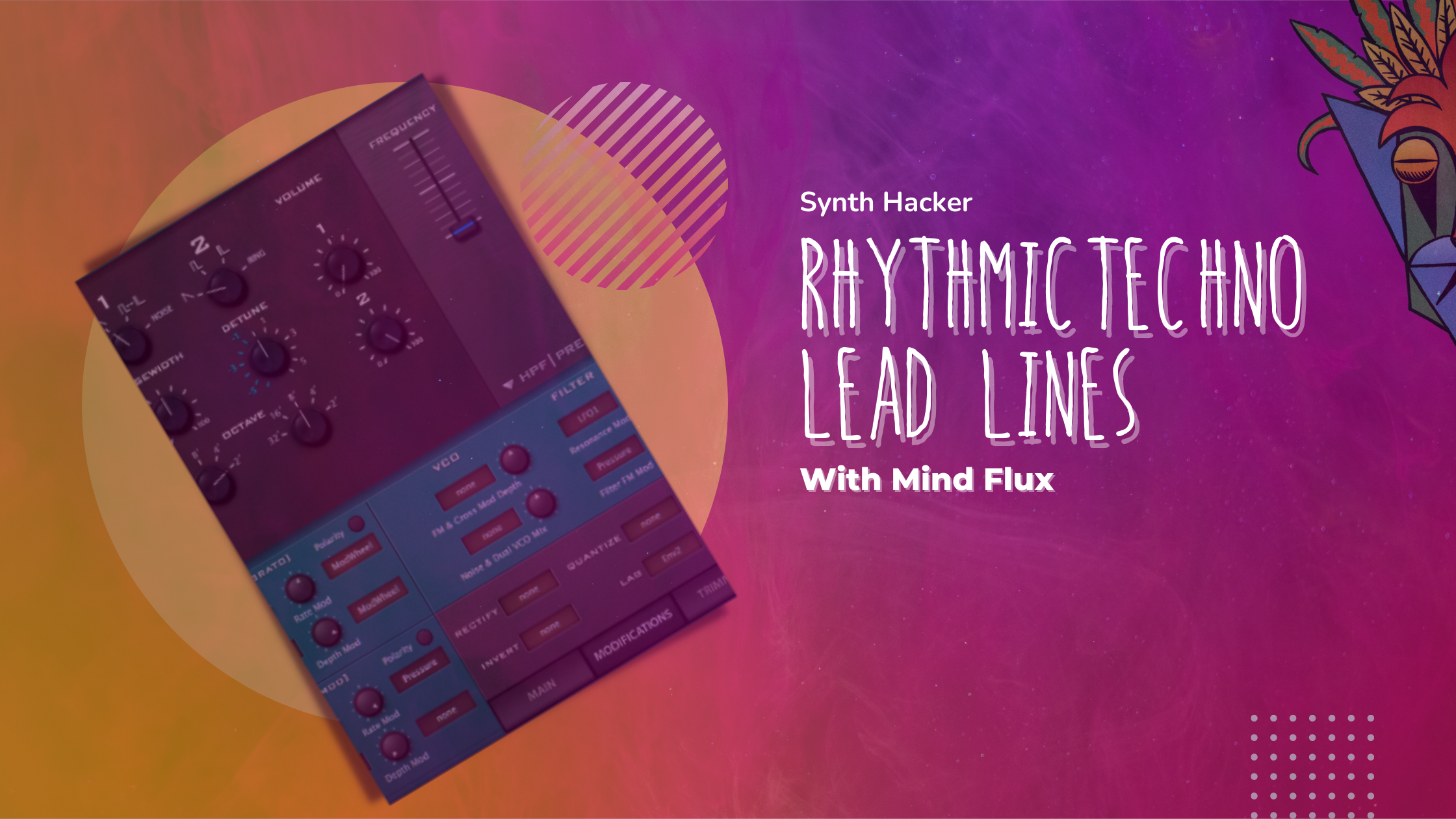Synth Hacker Rhythmic Techno Lead Lines with Diva
Welcome to our guide on creating a techno rhythmic lead using the powerful u-he Diva synthesizer. If you're looking to take your music production skills to the next level, this tutorial is for you. In this tutorial, we will be exploring the intricacies of FM and LFO modulation, and also delving into the creative possibilities of using aftertouch to enhance our sound.
First, let's talk about FM modulation. FM stands for frequency modulation and involves using one oscillator to modulate the frequency of another oscillator. This can create a wide range of complex and evolving timbres, which are perfect for techno leads. In u-he Diva, you can use the FM modulation to create interesting textures and harmonics by adjusting the amount, ratio, and waveform of the modulating oscillator.
Diva Set Up
First, let's start by loading Diva onto a MIDI track in your DAW. Once loaded, switch the oscillator to MS20 and set the HP to HP pre. Set the filter to MS20 and the envelope to analogue. This creates a warm, vintage sound, perfect for techno.
Oscillators
To add more depth and complexity to your lead, let's jump back to the oscillator section. Set Oscillators 1 and 2 to saw waveforms, and set the mixer to only hear Oscillator 2. By doing this, Oscillator 2 will be the primary sound source, while Oscillator 1 will be used to modulate the filter cutoff frequency. This technique creates a dynamic and evolving sound that adds character and interest to your lead. Experiment with different waveforms and mixer settings to achieve your desired tone.
Filters
Now, let's move on to the filter section to shape the tonal characteristics of your lead. Set the cutoff frequency to 41, the peak resonance to 0, and the FM (frequency modulation) amount to 24. We will now use velocity and Envelope 2 to modulate the filter cutoff frequency. To achieve this, jump into the modifications section and select velocity and Envelope 2 from the "Add" menu. Choose one of the filter modulators and set it to "Add" mode, then dial in a value of +54. This creates a rhythmic and pulsing effect that injects movement and excitement into your lead. Feel free to experiment with different modulation sources and values to fine-tune your sound.
Expression
To add even more expressiveness to your lead, we'll modulate the FM amount with aftertouch pressure. This technique allows you to create unique and dynamic sounds that respond to your playing style. By applying different amounts of pressure to the keyboard, you can add subtle or drastic changes to your lead sound, bringing it to life with personality and emotion. Experiment with different aftertouch sensitivity settings and FM modulation amounts to find the perfect balance for your sound.
LFO’s
Now, let's dive deeper into using LFOs to modulate our sound. In u-he Diva, the LFOs are powerful tools that can add movement and interest to our lead sound. In this section, we will use LFO 2 to modulate the filter cutoff and create a hypnotic, evolving sound that will keep your audience captivated.
To get started, let's set up the LFO. In the LFO section of u-he Diva, select LFO 2 and set the waveform to saw down. This waveform has a sharp attack and a smooth decay, which is perfect for creating a percussive and rhythmic effect. Set the delay to 53, Set the trigger to gate, which means the LFO will restart every time a new note is triggered.
Next, let's set the time and rate of the LFO. In u-he Diva, you can sync the LFO time to the tempo of your project. For this tutorial, let's set the time to sync 1/16triplet, which means the LFO will cycle every 1/16th note triplet. Set the rate to -4, which means the LFO will cycle four times slower than the tempo of your project. This creates a slow and hypnotic effect that is perfect for techno leads.
Finally, let's use LFO 2 to modulate the filter cutoff. In u-he Diva, select the filter cutoff and set it to maximum. Then, select LFO 2 and set it to modulate the filter cutoff. This means that the filter cutoff will be modulated by the LFO at its maximum value.
The result is a hypnotic, evolving sound that will keep your audience captivated. By adjusting the time, rate, and waveform of the LFO, you can create a wide range of rhythmic and percussive effects that are perfect for techno leads.
More Expression
Finally, let's explore how we can use aftertouch to add an extra layer of expression and depth to our lead. In u-he Diva, we can assign aftertouch to modulate the rate of the LFO, which creates a subtle or dramatic change in the modulation speed. This is a powerful technique that allows you to add even more nuance and variation to your lead sound.
To set up aftertouch modulation in u-he Diva, simply right-click on the LFO rate parameter and select "Assign Aftertouch". Now, when you apply pressure to your MIDI keyboard, the LFO rate will change according to the amount of pressure you apply.
But why stop there? To take things even further, let's create an automation clip for the aftertouch expression control in your DAW. This allows you to control the amount of aftertouch modulation over time, creating a unique and evolving performance every time you play the lead.
To create an automation clip for aftertouch, simply find the expression control in your DAW and right-click to create an automation clip. Now you can draw in the amount of aftertouch modulation you want at different points in your track, creating dynamic and expressive performances that are truly unique.
In conclusion, using aftertouch to modulate the rate of the LFO is a powerful technique that adds an extra layer of expression and depth to your lead sound. And by creating an automation clip for the aftertouch expression control in your DAW, you can take this technique even further and create dynamic and evolving performances that are truly one-of-a-kind. So go ahead and experiment with this technique to see how it can take your music to the next level!

















